Strobe tests: Inon Z330, Retra Flash and Symbiosis SS2
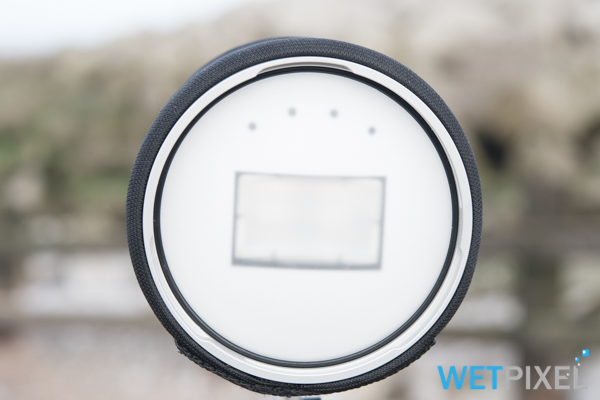
Retra Flash
Retra’s specifications for this strobe are as follows:
GN 30 (100W/s)
Beam Angle: 110°
Color Temperature: 5400°K
TTL: S-TTL via optical only.
Triggering: Optical or electric (S&S 5 pin, S6, N5 and Ikelite 5 pin by order)
Battery life: 450 flashes (900 with optional extra battery pack)
Recycle time: 2s (1s with optional extra battery pack)
Diffuser: 4500°K.
Underwater weight: -50g
Retra is a new player in the lighting field, but have a solid background in both the engineering and design, with their successful and almost ubiquitous range of LSD snoots.
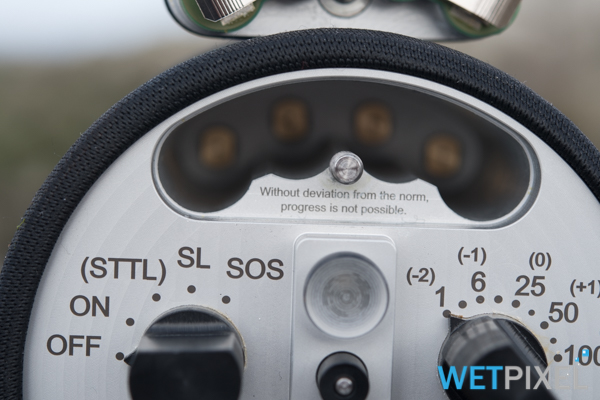
Within the battery compartment of the Retra Flash is engraved a quote from Frank Zappa:
“Without deviation from the norm, progress is not possible”
In many ways, this statement is a synopsis of Retra’s approach to the design of this strobe. Rather than launch it through a series of distribution arrangements and retailers, Retra has chosen to crowdfund its development and ship direct from their factory. There are benefits to this approach in terms of affordability, but it does raise issues around warranty and service. While there seems to be an attempt to establish a dealership base latterly, it remains irksome to need to return units to base for service.
That said, several other well established strobe suppliers do require return to base, so the policy is not unique.

The strobe is beautifully constructed with an aluminum body, which also acts as a heat sink. Its size and shape allows it to be tucked in close to a macro or small dome port if required.
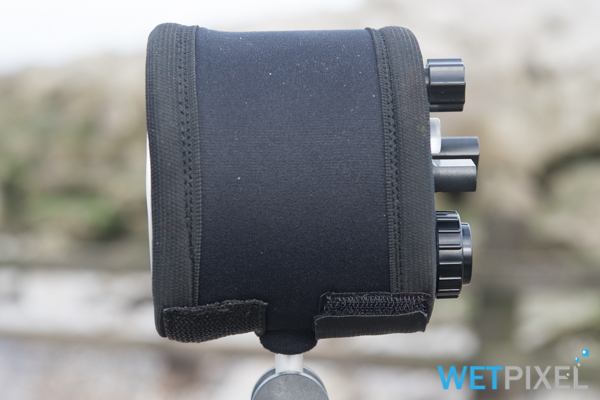
The single quartz glass straight tube is within a gently curved dome which is slightly opaque. It is currently supplied as standard with a 1” ball and a neoprene cover.
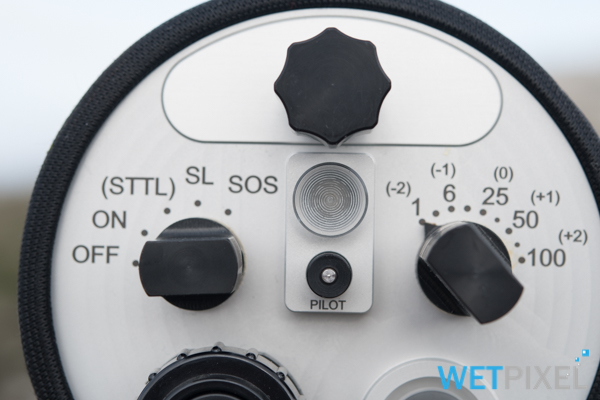
Controls are straightforward and easy to use. The left hand dial sets the strobe’s mode, while the right (with an extended “glove friendly” control) offers power adjustment. Between the two is the mode/ready light and a push button that activates the strobe’s 300 lumen aiming light.
The Flash does not have a separate button to either cancel or allow the camera’s pre flash. Retra’s approach is to build a learning mode into the strobe that can “count” the number of pre flashes and expose correctly accordingly. This is accessed by holding the aiming light switch for 4 seconds or more. Once it has learnt this it will retain the setting until the setting is changed again.
The strobe has a series of 4 LED indicators on the front of the strobe that give an indication of battery status. Of course, to see them you have to point the strobe at yourself! The mode/ready light is color coded to denote current mode. Retra suggest that the focus light provides sufficient light to view the controls at night, but I found that I still had to use my focus light.
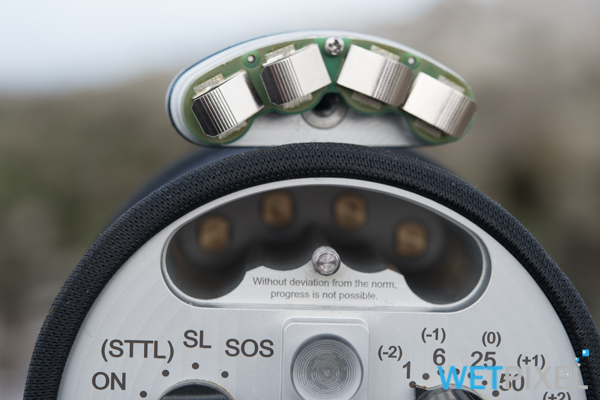
The all aluminum construction includes the battery compartment and door. It is, of course, O ring sealed but it is important to ensure that it does not bind as it is tightened into place. It features really heavy duty battery contacts for the required 4 x AA cells that power the Flash. There is also an optional additional battery pack, which doubles the number of batteries, increasing the number of flashes and decreasing the recycle time.
Flash triggering is available via electrical connection with options for Sea&Sea 5 pin, S6, Nikonos 5 pin and Ikelite 5 pin bulkheads available by order. Output with electrical connection is manual control only.
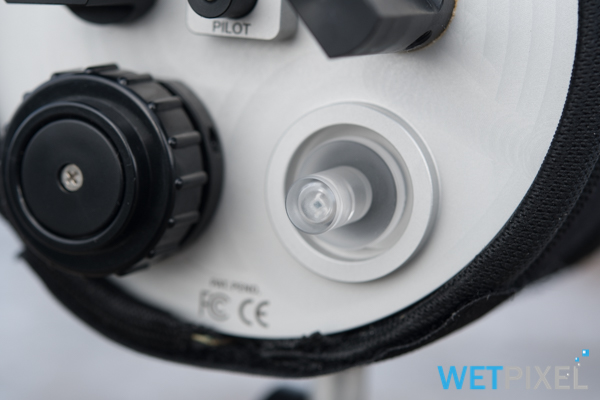
Optical triggering offers S-TTL and manual options and the strobe is supplied with nifty adapter that allows it to be used with both L type and Nauticam fiber cables.
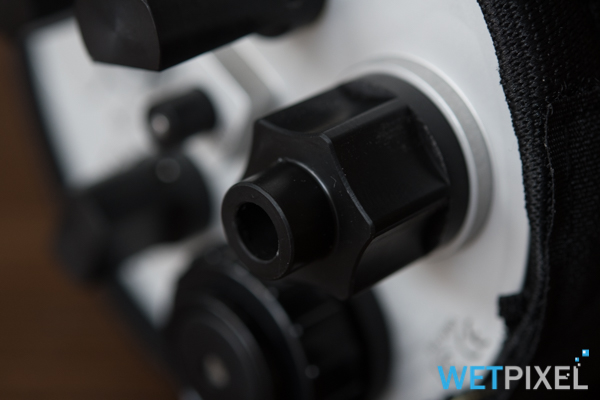
Connections are via the rear of the Flash.
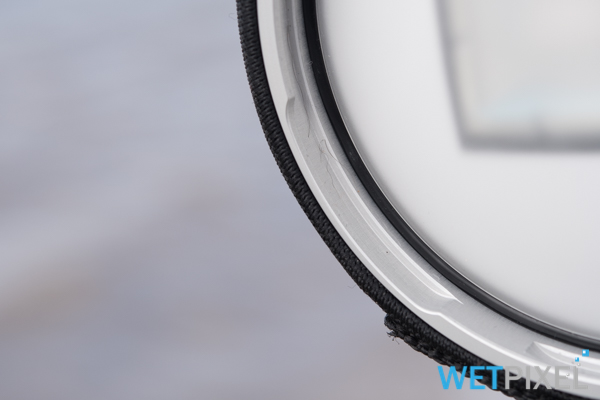
Retra has an ecosystem of accessories that attach via a bayonet fitting.
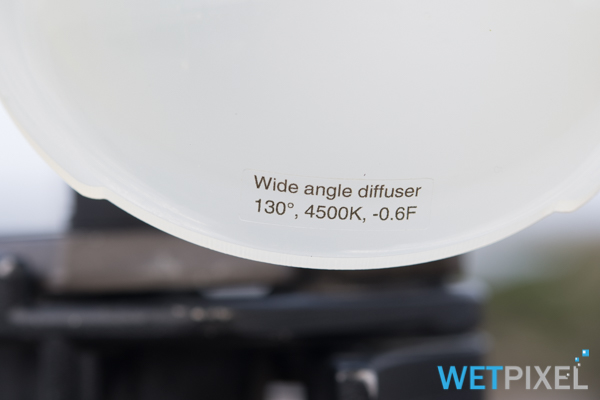
It ships with a dome diffuser that is also warming, offering an 130° beam angle and 4500°K color temperature, at the cost of a -0.6 f-stop of power. The diffuser is fitted with a lanyard attachment.
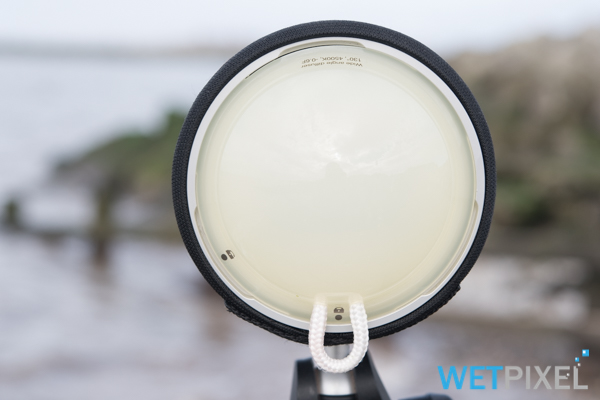
The Retra Flash we have been testing showed a strange quirk. It was possible to switch the strobe on, get the ready light, but the switch was not fully in the “on” position and the strobe would not fire. Switching the on switch off and the back on again seemed to cure it and the fault was intermittent.
As we only have only tested one unit, it may well be an idiosyncracy with this individual strobe.
As above, testing was undertaken using a Seacam housing with a UWTechnics TTL opto-electrical converter.
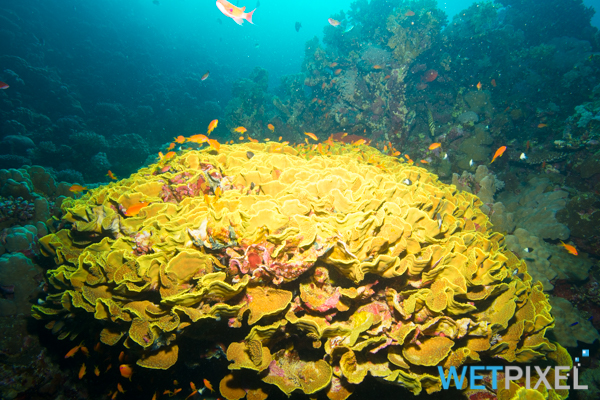
TTL was not at all reliable and cannot currently be recommended. This is likely to be addressed by TTL converter manufacturers developing specific firmware. Whether this will be something that can be retrospectively added to existing units is currently unknown.
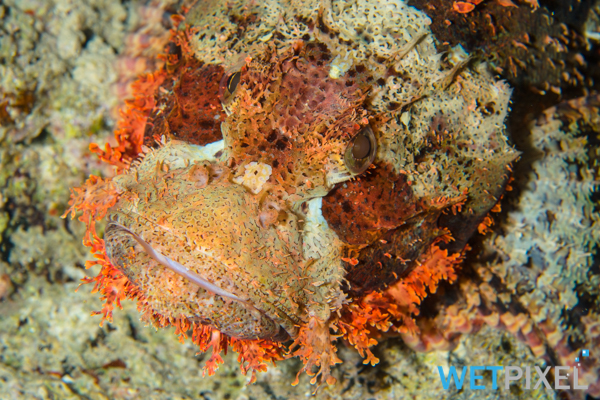
The attachment of fiber cables to the rear of the Flash makes cable routing easier and cleaner. In general, keeping the cables back away from skittish subjects is one less thing to “flap” about and spook them.
Testing shows that, with fresh batteries, the Retra Flash recycles in around 2 seconds. At half power, the strobe will recycle almost continuously at 4 frames per second. Battery life averaged at 421 flashes at full power with Eneloop Pro batteries. The aluminum body effectively dissipates the heat produced by the Flash and it was cool to the touch throughout (immersed ian a bucket of water at room temperature).
Retra has spent a great deal of time talking to eminent photographers about their design. This is reflected in some of the features and the quality of light that it offers.
- Introduction.
- Strobe Fundamentals.
- Inon Z330.
- Retra Flash.
- Symbiosis SS2.
- Test results and conclusion.